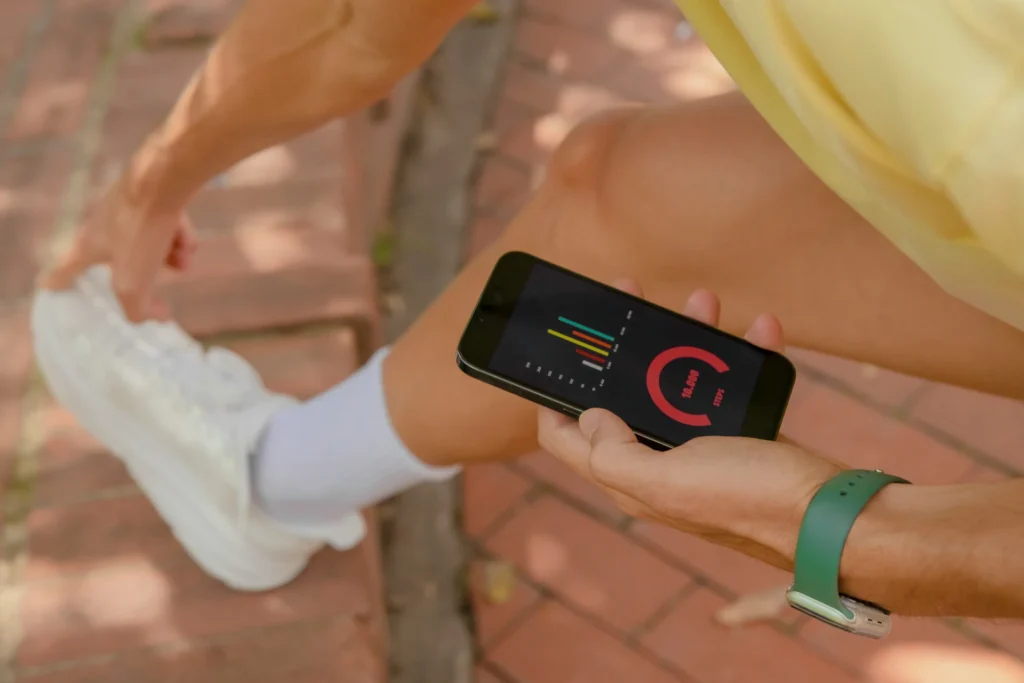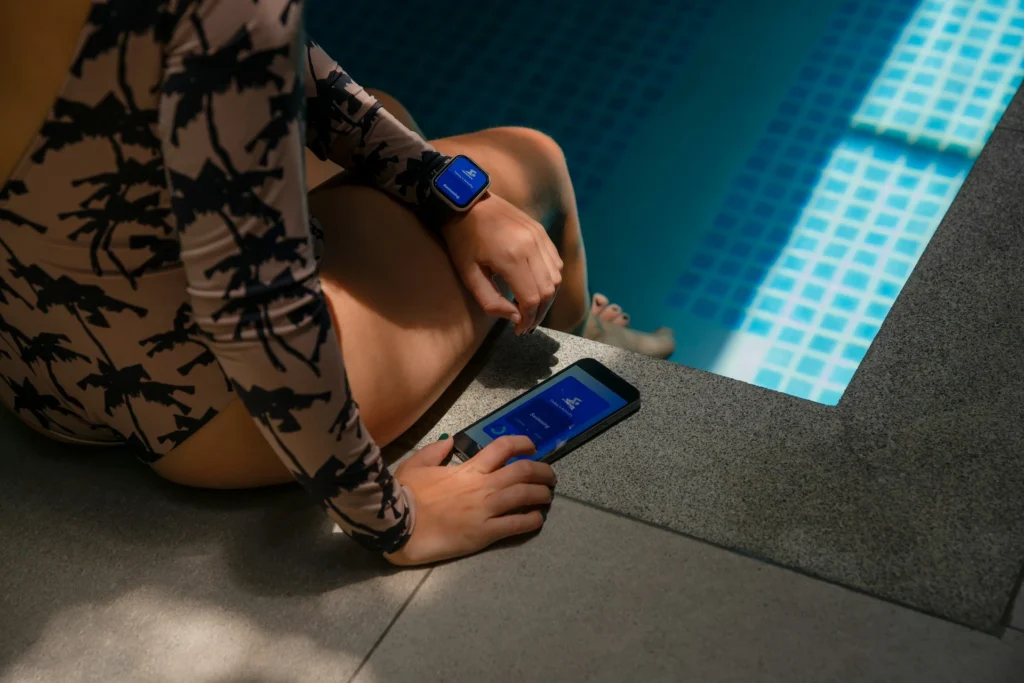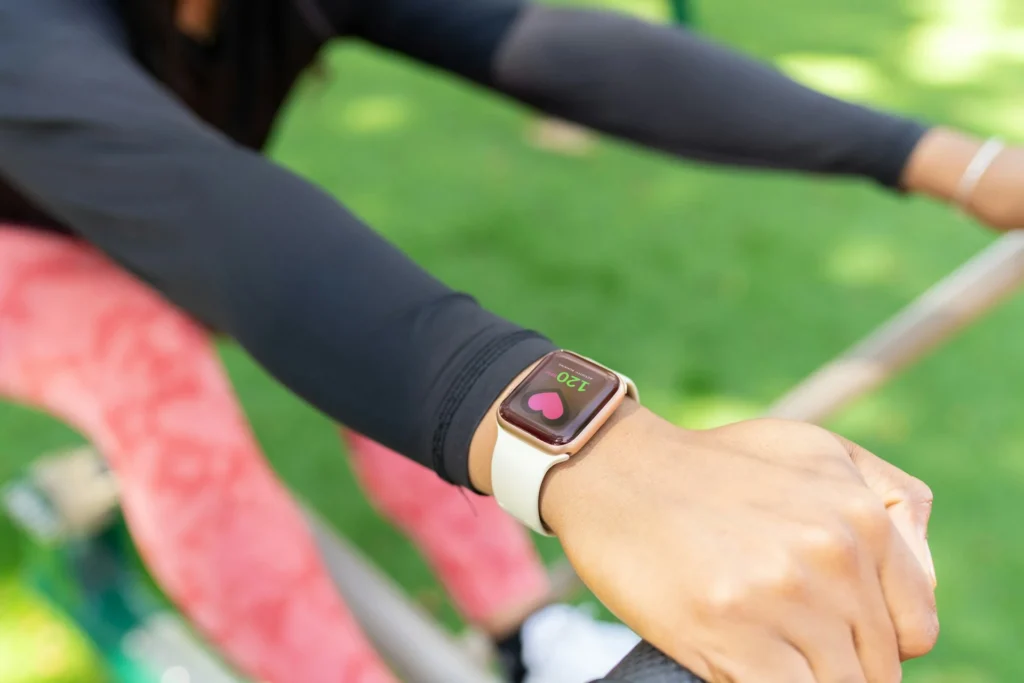Where once upon a time a simple jog around the neighbourhood in your Bermudas and a vest would have sufficed, nowadays if you’re not stepping out the house for exercise in all manner of wearable tech, then it doesn’t feel like you’re doing it right.
Indeed, in the world of health and fitness, wearable technology really has become a game-changer. From smartwatches to fitness trackers and everything in between, these devices offer real-time insights into our physical activity, providing data on steps, heart rate, calories burned and a whole host of other metrics. Whether you choose to totally ignore all that data, like so many of us do, or use it to your advantage, is often the difference between a satisfying fitness journey and one mired in inconsistency.
That’s because the best wearable tech allows the health driven folk among us to monitor their progress, stay motivated, and make informed decisions about their fitness stats along the way.
As technology continues to evolve, the role of these devices in personal fitness is expanding at a really impressive rate, transforming how we approach workouts and overall wellness. Fitness has never been so accessible or data-driven.
Firstly, What Are The Main Forms Of Fitness Wearable Currently Available?
Fitness wearables come in various forms, each designed to cater to different aspects of physical activity and health monitoring. The main types include:
- Smartwatches: These multifunctional devices not only tell time but also track a wide range of fitness metrics, from steps and heart rate to sleep patterns and stress levels. Popular models include the Apple Watch and Samsung Galaxy Watch.
- Fitness Trackers: More streamlined than smartwatches, fitness trackers like the Fitbit Charge and Garmin Vivosmart focus primarily on health and fitness metrics, offering detailed insights into daily activity levels.
- Heart Rate Monitors: Often worn around the chest, these devices provide precise heart rate data, making them ideal for athletes and those engaged in high-intensity workouts.
- Smart Clothing: Embedded with sensors, smart clothing such as shirts, shorts, and even socks can monitor muscle activity, heart rate, and other vital signs, providing a comprehensive overview of physical performance.
- GPS Watches: Specifically designed for outdoor activities like running, cycling, and hiking, these watches offer accurate tracking of distance, pace, and route, helping users navigate and improve their performance.
- Smart Rings: Compact and stylish, smart rings like the Oura Ring track sleep, activity, and readiness, providing a holistic view of health in a discreet form factor.
- Smart Glasses: Devices like the Vuzix Blade offer augmented reality features, allowing users to access fitness data and navigation without looking at their wrist, enhancing the workout experience.

And, What Are The Most Common Features?
Fitness wearables are packed with features that cater to a wide range of fitness needs. Some of the most common features include:
- Step Counting: Tracks the number of steps taken throughout the day, encouraging users to stay active.
- Heart Rate Monitoring: Provides real-time data on heart rate, helping users stay within their target zones for optimal performance and health benefits.
- Calorie Tracking: Estimates the number of calories burned during various activities, aiding in weight management and fitness planning.
- Sleep Tracking: Monitors sleep patterns and sleep quality, offering insights into how well users are resting and recovering.
- GPS Tracking: Records routes, distance, and pace for outdoor activities, helping users track their progress and set new goals.
- Notifications and Alerts: Syncs with smartphones to deliver notifications for calls, messages, and reminders, ensuring users stay connected even during workouts.
Advanced Metrics: VO2 Max, ECG & Stress Monitoring
Morden fitness wearables are no longer limited to tracking basic metrics; they now offer advanced metrics that were once only accessible to elite athletes in sports performance labs.
Devices equipped with functions such as VO2 Max measurement help users understand their cardiovascular endurance, while stress monitoring has also become a key feature, providing insights into how external factors impact physical performance.
On top of that, some wearables now include SpO2 sensors to measure blood oxygen levels, giving users a more comprehensive view of their respiratory health. For those wanting a closer look at their heart health, services like ECG at Home make it easy to get checked without needing a referral. It’s a simple way to back up your fitness tracker data with something more clinical.
These advanced tools allow the everyday fitness enthusiast to tap into professional-level data, leveraging this to enhance their training thanks to a deeper understanding of their body’s responses and needs.

Fitness Wearables As Lifestyle Statement
Fitness wearables have evolved from mere tracking tools to stylish lifestyle statements, blending technology with personal flair. No longer just for monitoring steps and heart rates, these devices now offer extensive customisation options, allowing users to express their individuality while staying fit.
Interchangeable watch straps are a popular feature, with options ranging from sleek leather to durable silicone and sophisticated metal. This versatility means your fitness tracker can transition seamlessly from a workout to a formal event, making it an essential accessory for any occasion.
Customisable watch faces and widgets further enhance personalisation, offering designs from minimalist to vibrant displays. This ensures your wearable is not just a fitness tool but a true reflection of your personality.
The fusion of fashion and functionality has made fitness wearables a staple in both the gym and everyday life. Collaborations with renowned designers have led to limited-edition models featuring premium materials and unique designs, turning fitness trackers into coveted fashion items.
In essence, fitness wearables are now essential lifestyle accessories, offering both style and substance. Whether at the gym, in a meeting, or on a night out, your wearable tech keeps you connected, motivated, and looking your best.

Further Integration With Apps & Virtual Coaching
Recently fitness wearables have become even more powerful with seamless integration into apps and virtual coaching platforms offered by the devices themselves and third party providers. By syncing up with popular fitness apps, these devices offer a deeper, more personalised experience for each user. This in turn assists in helping users track progress, set goals, and participate in virtual classes or challenges.
Virtual coaching adds another layer of engagement, providing real-time guidance based on live metrics from the wearable device. This state of the art interconnectedness keeps users motivated, accountable, and fully engaged in their fitness journey, offering an added layer of motivation that would previously not have been within reach.
Wearable Tech That Is Specialised In Specific Workouts
Fitness Watches are becoming essential tools for specialised workouts, offering tailored tracking for each user’s specific fitness regimes such as HIIT, yoga, and running.
During high-intensity interval training (HIIT), wearables monitor heart rate zones and calorie burn, helping users optimise their performance and recovery. In contrast, when tracking yoga, devices monitor flexibility, balance, and even breathing patterns, enhancing mindfulness and posture alignment.
For runners, fitness tech can provide real-time data on pace, distance, and cadence, allowing athletes to fine-tune their technique and improve endurance levels. This specialisation ensures that modern day smartwatch users are now able to get the very most out of their chosen workouts.
Recovery Tracking & Injury Prevention
Modern fitness wearables have evolved beyond simply tracking workouts to become crucial tools for recovery and injury prevention. These devices now monitor recovery metrics such as heart rate variability (HRV), which indicates how well your body is adapting to training stress and when you might need additional rest.
Many wearables provide recovery scores and readiness assessments, analysing sleep quality, resting heart rate trends, and overall activity levels to recommend whether you should push hard or take it easy on any given day. Some advanced models even detect unusual movement patterns or muscle imbalances that could lead to injury, alerting users to potential issues before they become problematic.
Temperature monitoring has also emerged as a valuable feature, with devices tracking skin temperature variations that can indicate early signs of illness or overtraining. This proactive approach to health monitoring helps fitness enthusiasts maintain consistency in their routines whilst minimising the risk of burnout or injury-related setbacks.
By prioritising recovery alongside performance, these smart devices ensure users can sustain their fitness journeys long-term, making progress without compromising their overall health and wellbeing.

Wearable Tech & Social Fitness
In addition to this, wearable tech has now also taken on a new social dimension, connecting users with broader fitness communities and fostering healthy competition within them.
Many smartwatches now include features that allow users to join challenges, share workout data, and compare progress with their friends or other members of online fitness groups. This social engagement boosts motivation, encouraging people to stay consistent with their fitness routines. Fitness apps and wearables also create leader boards and reward systems, turning exercise into a fun, competitive activity.
By building a sense of community, wearable tech makes fitness more engaging and rewarding for users everywhere.
The Bottom Line
All things considered, it truly seems that the future of wearable tech is poised for exciting developments, with trends like augmented reality (AR) fitness devices that will immerse users in interactive workout experiences meaning they can workout from home with all the motivation of the gym or track.
Improved sensors are expected to provide even more precise health data, offering deeper insights into physical performance and overall well-being. Integration with other health technologies, such as telemedicine platforms and AI-powered diagnostics, will create a seamless ecosystem where wearables play a key role in managing both fitness and long-term health.
However, there are challenges that we need to consider, including the cost of high-end devices and concerns around data privacy. As wearables evolve, balancing the advantages with these concerns will be key to their long-term success and user adoption in the fitness industry.





